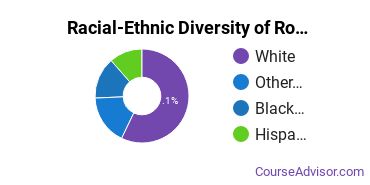Ross Medical Education Center - New Baltimore Overview
Ross Medical Education Center - New Baltimore is a private for-profit institution situated in New Baltimore, Michigan. New Baltimore is considered a suburb and offers tranquility and safety near the excitement of a city center.
What Is Ross Medical Education Center - New Baltimore Known For?
- Ross - New Baltimore has an impressive student to faculty ratio of 6 to 1.
- The undergraduate certificate is the highest award offered at Ross - New Baltimore.
Where Is Ross Medical Education Center - New Baltimore?

Contact details for Ross - New Baltimore are given below.
| Contact Details | |
|---|---|
| Address: | 51133 Birch Street, Ste 100, New Baltimore, MI 48047-1581 |
| Phone: | 586-716-3837 |
| Website: | rosseducation.edu |
Can I Afford Ross Medical Education Center - New Baltimore?
Student Loan Debt
Almost 66% of college students who graduated with the class of 2018 took out student loans, but that percentage varies from school to school. At Ross - New Baltimore, approximately 92% of students took out student loans averaging $9,490 a year. That adds up to $37,960 over four years for those students.
Explore Best Ranked Schools for You
Ross Medical Education Center - New Baltimore Undergraduate Student Diversity
Racial-Ethnic Diversity
The racial-ethnic breakdown of Ross Medical Education Center - New Baltimore students is as follows.

| Race/Ethnicity | Number of Grads |
|---|---|
| Asian | 0 |
| Black or African American | 7 |
| Hispanic or Latino | 5 |
| White | 42 |
| International Students | 0 |
| Other Races/Ethnicities | 5 |
Ross Medical Education Center - New Baltimore Undergraduate Concentrations
The table below shows the number of awards for each concentration.
| Major | Undergraduate Certificate | TOTAL |
|---|---|---|
| Allied Health & Medical Assisting Services | 14 | 14 |
| Veterinary/Animal Health Technologies/Technicians | 9 | 9 |
| Dental Support Services | 5 | 5 |
| TOTAL | 28 | 28 |
References
*The racial-ethnic minorities count is calculated by taking the total number of students and subtracting white students, international students, and students whose race/ethnicity was unknown. This number is then divided by the total number of students at the school to obtain the racial-ethnic minorities percentage.
More about our data sources and methodologies.
